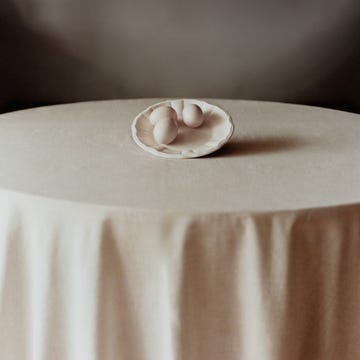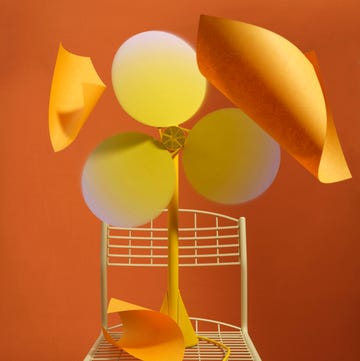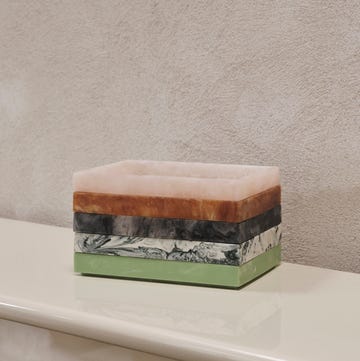When it comes to bathroom etiquette, Studio Mica’s founding director Carolynne Shenton and director Abigail Kendler are well versed. They have worked on the interior of Nobu Hotel in Shoreditch (the loos are very Instagram-worthy) and Blakes Hotel in South Kensington, as well as more hospitality and residential projects around the globe. It was the duo’s collaboration with House of Rohl for its room at this year’s Wow!House at Design Centre, Chelsea Harbour that piqued our interest, though. Namely because of its intriguing use of mirrors…
Where should a bathroom mirror be placed?
Obviously, a mirror above a basin is often the default choice for a bathroom, but for us it’s important to think of a trinity of needs when placing mirrors. First, select a magnifying mirror, then you will require a vanity mirror that frames your head and shoulders. Finally, never forget a full-length mirror. The latter can be very slim and even cleverly integrated into a wall as decorative panelling, because you are likely to have another one somewhere else (bedroom or dressing area).
It’s not all about your reflection, though. Decorative mirrors can also serve architectural purposes in the bathroom – place them opposite a window to enhance the natural light or opposite a focal point, such as a bath, to frame a favourite spot and visually extend the space.
What's everyone reading?
What’s the optimum height to hang a mirror?
You may think eye height is a good guide, but this can be misleading – you want to see your body below the mirror, not just the space above your head! A good rule is that your eyeline should be two thirds of the way up the mirror.
How should you choose and place your lighting?
Never position lighting behind your head and the mirror – this casts unflattering shadows. The optimum lighting should be diffused and placed directly in front of you – an opal wall light beside the mirror or a frosted light source built into the mirror are good options. Of course, the gold standard is natural light. For a residential project in Ibiza, we placed the vanity mirror in front of the large floor-to-ceiling window to make the most of the natural courtyard light. To mimic daylight, opt for bulbs with a warm, white colour (cold or bright white light is too stark), and to add atmosphere ensure the lighting is dimmable.
Are there any unusual designs or mirror finishes that you would recommend for bathrooms?
In the bathrooms at Nobu Hotel Shoreditch we created a large wall backdrop of bronze-tinted mirror and then placed in front of this a clear-silver vanity mirror with integrated lighting and a magnifying mirror. The layering added a touch of glamour to the pristine white bathrooms.
One other way we’ve added a unique twinkle to bathrooms in the past was a decorative wall made with multiple vertical slivers of bronze-tinted mirror in different shades, and wall lights fixed directly onto the mirror. The alternating surface was decorative rather than functional, but still beautifully reflective. Finally, convex mirrors can be a very interesting choice for smaller bathrooms. We used one in our room at Wow!House – the reflected view is wonderfully framed from multiple angles. It’s a way to turn a mirror into a talking point. studiomica.co.uk


















